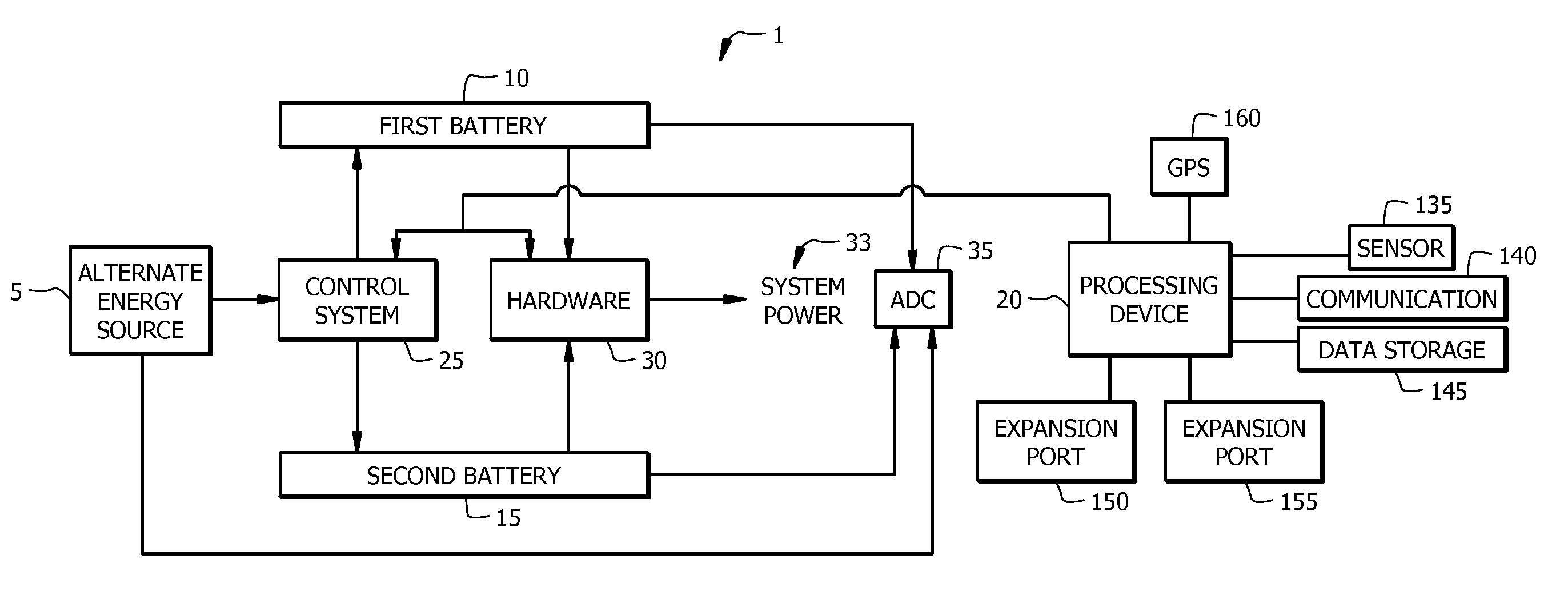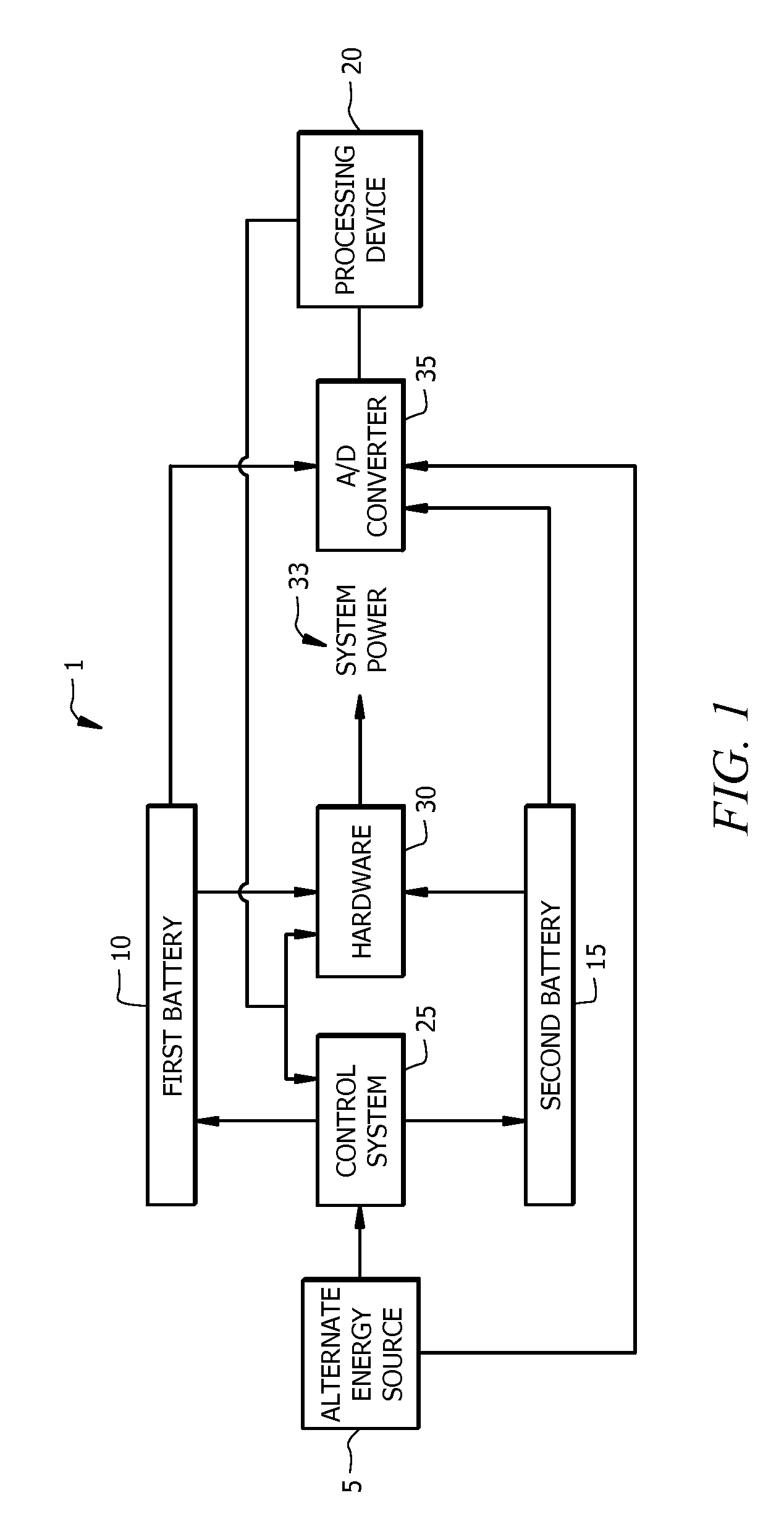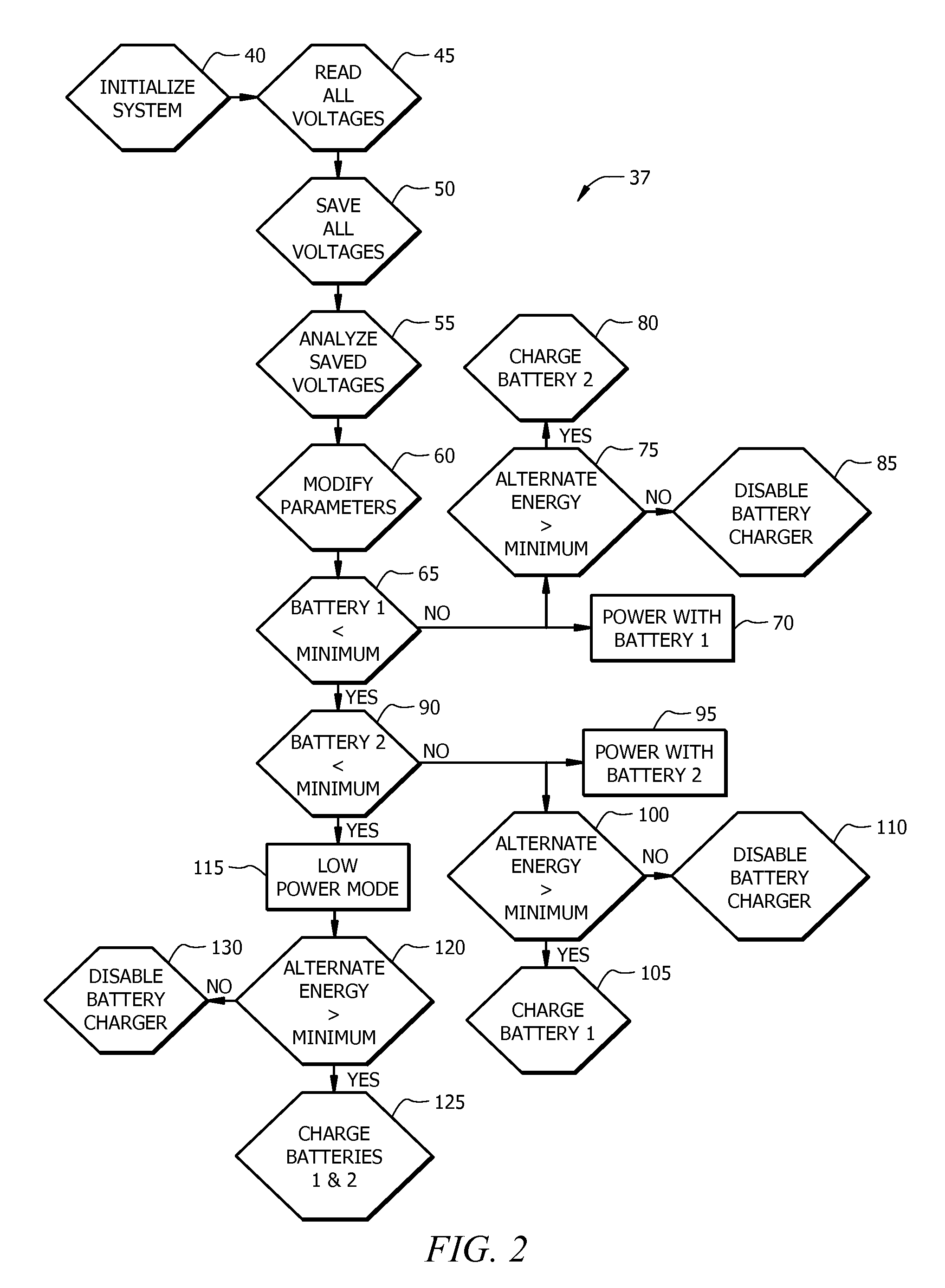Adaptive power system
a power system and adaptive technology, applied in the field of power systems, can solve the problems of limited useful life of traditional batteries, device inoperable or unusable, and only operable traditional battery powered devices
- Summary
- Abstract
- Description
- Claims
- Application Information
AI Technical Summary
Benefits of technology
Problems solved by technology
Method used
Image
Examples
Embodiment Construction
[0010]These and other needs in the art are addressed in one embodiment by a system for extending a device life. The system includes a plurality of power sources, wherein each power source is disposed to be charged when one of the power sources is providing voltage to the device. The system further includes an alternate energy source, wherein the alternate energy source is disposed to charge power sources that are not providing voltage to the device. Moreover, the system includes a processing device.
[0011]An additional embodiment of the present invention includes a method for extending a device life. The method comprises providing a plurality of power sources and an alternate energy source. In addition, the method comprises measuring the voltage of the power sources and the alternate energy source. Moreover, the method comprises selecting a power source to provide voltage to the device, wherein the selected power source provides voltage to the device. The method further comprises opt...
PUM
 Login to View More
Login to View More Abstract
Description
Claims
Application Information
 Login to View More
Login to View More - R&D
- Intellectual Property
- Life Sciences
- Materials
- Tech Scout
- Unparalleled Data Quality
- Higher Quality Content
- 60% Fewer Hallucinations
Browse by: Latest US Patents, China's latest patents, Technical Efficacy Thesaurus, Application Domain, Technology Topic, Popular Technical Reports.
© 2025 PatSnap. All rights reserved.Legal|Privacy policy|Modern Slavery Act Transparency Statement|Sitemap|About US| Contact US: help@patsnap.com



